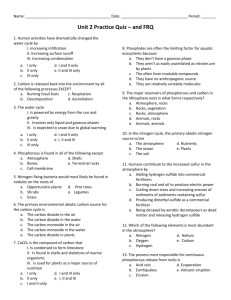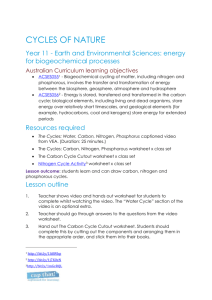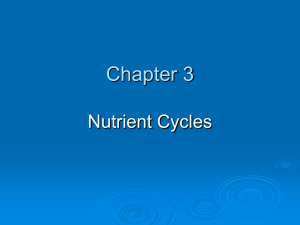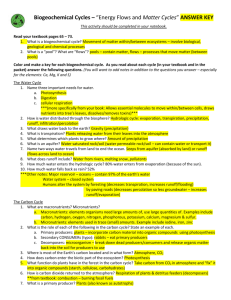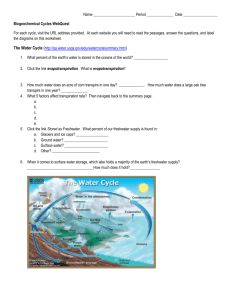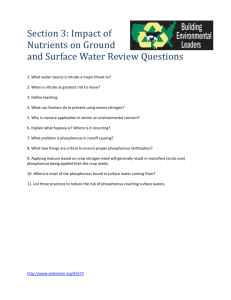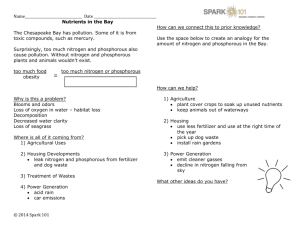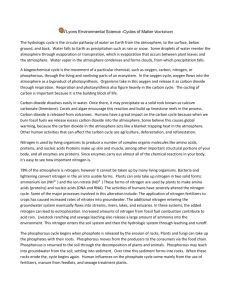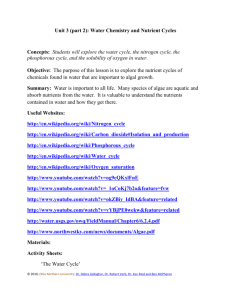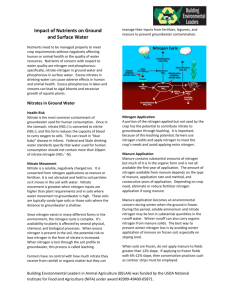BIOLOGY BIOGEOCHEMICAL CYCLES NOTES Cycles: Water
advertisement
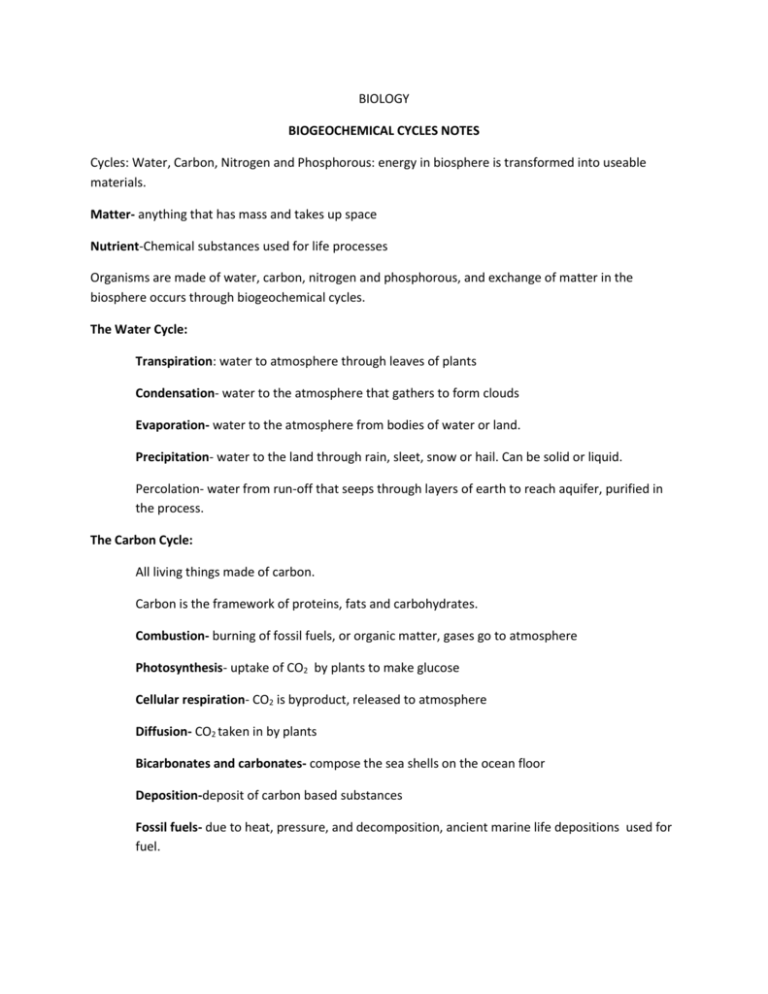
BIOLOGY BIOGEOCHEMICAL CYCLES NOTES Cycles: Water, Carbon, Nitrogen and Phosphorous: energy in biosphere is transformed into useable materials. Matter- anything that has mass and takes up space Nutrient-Chemical substances used for life processes Organisms are made of water, carbon, nitrogen and phosphorous, and exchange of matter in the biosphere occurs through biogeochemical cycles. The Water Cycle: Transpiration: water to atmosphere through leaves of plants Condensation- water to the atmosphere that gathers to form clouds Evaporation- water to the atmosphere from bodies of water or land. Precipitation- water to the land through rain, sleet, snow or hail. Can be solid or liquid. Percolation- water from run-off that seeps through layers of earth to reach aquifer, purified in the process. The Carbon Cycle: All living things made of carbon. Carbon is the framework of proteins, fats and carbohydrates. Combustion- burning of fossil fuels, or organic matter, gases go to atmosphere Photosynthesis- uptake of CO2 by plants to make glucose Cellular respiration- CO2 is byproduct, released to atmosphere Diffusion- CO2 taken in by plants Bicarbonates and carbonates- compose the sea shells on the ocean floor Deposition-deposit of carbon based substances Fossil fuels- due to heat, pressure, and decomposition, ancient marine life depositions used for fuel. The Nitrogen Cycle: Nitrogen is found in proteins, but the greatest concentration is in the atmosphere- 78% Plants and animals cannot use atmospheric nitrogen. Nitrogen gas is captured by bacteria in soil, water and air, and roots of plants Nitrogen Fixation: the conversion of atmospheric nitrogen for use by plants and animals. 1. Can be fixed during electrical storms by lightning 2. Can be fixed with use of chemical fertilizers Nitrogen enters plantsplants make proteins plants are eaten by consumers converted to consumer proteins Nitrogen is a limiting factor for plant growth. Low levels of nitrogen result in no growth or slow growth. Nitrogen returned to soil: 1. Urination- urine has high ammonia content 2. Dentrification-soil bacteria converts ammonia (NH3) to nitrogen gas for release into the atmosphere. The Phosphorous Cycle: Phosphorous is essential for growth and development of organisms. There are actually 2 cycles: 1. Short term: Phosphorous in soilplants consumersconsumers die, and phosporous is released into the soil 2. Long term: precipitation and sedimentation traps phosphorous in rock, weathering and erosion cause it to be released back into the cycle. Phosphates are found in small amounts in soil, and water. Phosphorous is also a limiting factor for growth of the producers.




